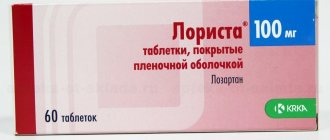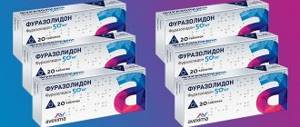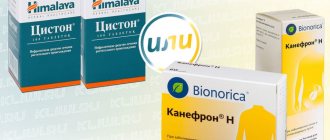Cystitis is a disease of the genitourinary system, the effective treatment of which requires the use of antibiotics. The most effective are broad-spectrum medications belonging to the penicillin pharmaceutical group. Amoxicillin is most often prescribed to both adults and children for cystitis.
The antimicrobial agent actively affects a number of pathogenic microorganisms that cause the development of the disease:
- gonococci;
- E. coli;
- streptococci;
- staphylococci.
Release form and composition
Available in:
- tableted;
- encapsulated;
- injection form.
The tablets are white, have a longitudinal line of 0.5 and 0.25 g. In addition to the active substance, there are also additional components (auxiliary):
- talc;
- starch;
- magnesium and calcium stearates;
- povidone.
Capsules are considered more effective, since the shell instantly dissolves in the human intestine, releasing the active substance Amoxicillin. In addition to the main element, it contains:
- gelatin;
- titanium;
- magnesium stearate;
- iron;
- cellulose;
- dyes.
Injections are advisable if the patient has gastrointestinal problems. This form is an oily transparent solution, one milliliter of which contains 250 milligrams of the active component. Intended for drip, intramuscular and intravenous administration.
The active substance dissolves in the gastrointestinal tract and enters the bloodstream, where after a few hours its concentration increases. Since a sufficiently large amount of it penetrates the bladder, pathogens cannot resist the effects and die.
Directions for use and doses
Amoxicillin is taken orally only. Injection is not used for cystitis. Food does not affect the absorption of the substance, and therefore the drug can be taken at any time convenient for the patient. Amoxicillin begins to act quickly, and its maximum concentration in the blood is reached within 90-110 minutes after administration.
The dosage of the drug and the frequency of administration are established only by the doctor, taking into account the individual characteristics of the patient’s body and the clinical picture of the disease. The standard dose for an adult is 0.5 g 3 times a day. If complications occur, the dose may be increased to 0.7-1 g. A maximum of 6 g of medication can be taken per day.
After eliminating the visible symptoms of the disease, taking Amoxicillin continues for another 3-4 days. If the disease worsens, an increased dose of the drug is prescribed, and active antibacterial therapy continues for 5-7 days. The effectiveness of the drug increases when combined with clavulanic acid. In the chronic form of cystitis, Amoxicillin is not considered a first-line treatment, and therefore is used in conjunction with other drugs, in particular fluoroquinolones. The course of treatment is 8-12 days.
Indications for use
In urology, antibiotics are used to eliminate bladder inflammation (acute and chronic) and bacterial infections. Microbes that provoke the development of pathology quickly die, since they are not able to develop immunity to it.
The drug is indicated for:
- glomerulonephritis;
- pyelonephritis;
- gonorrhea;
- inflammation of the urethra.
It is also effective in other pathological processes not related to the urogenital area:
- for diseases caused by Helicobacter;
- diseases of the upper respiratory tract caused by microbes (bronchitis, pharyngitis, pneumonia);
- leptospirosis;
- inflammatory processes of the genital organs;
- infections of bones, skin, soft tissues;
- meningitis, etc.
Use during pregnancy and lactation
It is allowed to be taken at all stages of pregnancy and by women whose children are breastfed. The medicine does not pose a danger to the fetus and newborn, although it penetrates into the blood.
During lactation it is recommended to drink with caution. With mother's milk, the child receives a small dose of the pharmaceutical, which sometimes causes dysbiosis or other negative changes in the gastrointestinal tract.
Taking Amoxicillin by men
The medication is indicated for patients of both sexes in equal quantities.
Use in children
There are no specific contraindications for the use of the drug in childhood. The dosage is calculated individually, depending on how old the child is.
Forms of the drug
To make it more convenient to take Amoxicillin when treating cystitis, there are several forms of the drug:
- The tablet form is absorbed into the bloodstream and reaches the bladder more slowly than other types of release. It is prescribed for the treatment of chronic cystitis, as well as for cystitis that has arisen for the first time and does not have pronounced manifestations. It is advisable to use for therapy in children over 10 years of age and adults;
- Amoxicillin capsules dissolve quickly enough and reach the place where inflammation has occurred. They are often used as primary care for severe symptoms of acute cystitis;
- Suspension - comes in the form of granules that need to be dissolved with warm water. Amoxicillin suspension helps with cystitis in young children; for this purpose it is available in various fruit flavors.
The concentration of the active drug in excreted urine is high, which is what allows Amoxicillin to successfully fight the manifestations of cystitis. The medication is excreted from the body through the liver and kidneys, so you need to monitor their functions when treating bladder inflammation.
Contraindications
Use is permissible only for medical purposes, and self-medication can be dangerous.
Not recommended for use when:
- presence of Epstein Barr virus in the body;
- leukemia, regardless of its type and type of course;
- pronounced vomiting and diarrhea;
- asthma;
- atopic dermatitis;
- allergies in the acute stage;
- individual intolerance to drugs from the penicillin group;
- established allergic reactions to antibiotic therapy (regardless of which pharmaceutical group the drugs belong to), since there is a high risk of developing anaphylactic shock;
- impaired functioning of the kidneys and liver (severe forms);
- stomach ulcer, gastritis, hepatitis during exacerbation.
When prescribing cephalosporins and penicillins to such a patient (regardless of generation), there is a high probability of cross-reactions.
Pharmacological properties
Amoxicillin (Amosin) belongs to the semi-synthetic broad-spectrum antibacterial agents from the group of penicillins. Unlike other drugs in this group, Amoxicillin has higher bioavailability and is used both orally and parenterally. The active substance of the drug is 6-aminopenicillanic acid (6 APA), which is synthesized by Penicillium fungi.
Showing high activity against bacteria such as staphylococcus (up to 80% of species), streptococcus, gonococcus, meningococcus, pneumococcus, shigella, the drug is practically ineffective in the treatment of diseases caused by microbes of the enteric typhoid group.
Amoxicillin is not prescribed for infection with Mycobacterium tuberculosis, for viral or fungal origin of the disease, and also in case of resistance of pathogenic strains to the action of penicillins.
The antibacterial drug has its advantages:
- Thanks to the hydroxyl group included in the drug, Amoxicillin quickly achieves its goal: a high concentration of the active substance is created in a short period of time.
- Another advantage of the drug is its resistance to the action of hydrochloric acid, which allows you to replace intramuscular injections with taking tablets. This advantage allows Amoxicillin to be widely used in pediatric practice without causing additional trauma to the child’s psyche.
If cystitis in women is caused by bacteria that are not sensitive to the action of the drug, Amoxiclav is considered the drug of choice. It contains a beta-lactamase inhibitor in the form of clavulanic acid, which significantly expands the spectrum of antimicrobial action. Amoxiclav is also used to prevent purulent-septic lesions during surgery and in the postoperative period, when there is a risk of infection.
Side effects
Treatment of cystitis with Amoxicillin is in some cases complicated by undesirable effects.
Most often, the body’s response is associated with its individual characteristics - hypersensitivity to the main component. The list includes:
- allergic rhinitis (inflammation of the nasal mucosa);
- Quincke's edema;
- conjunctivitis;
- hives;
- erythrometous rash;
- in laboratory tests, eosinophil levels are higher than the permissible norm.
In extremely rare situations, anaphylactic shock is a sudden, progressive condition that develops over a few minutes. Serious disturbances in the functioning of the respiratory and cardiovascular systems are observed. Help is required immediately (antihistamines and other drugs are administered). If emergency care is not provided in a timely manner, death can occur.
While undergoing antibiotic therapy, patients often complain of digestive problems. Vomiting, diarrhea, and pain appear due to stagnant bile processes.
A certain category of people experience changes in the central nervous system:
- depression;
- some disturbances of consciousness;
- dizziness;
- very rarely – hallucinations.
Amoxicillin.
When taking laboratory tests, the following deviations from the norm are noted:
- decreased number of neutrophils;
- increased activity of liver enzymes;
- platelets and leukocytes are below normal levels;
- anemia.
What to watch out for
The development of cystitis and treatment with Amoxicillin is associated with the development of adverse reactions in the human body.
- The gastrointestinal tract suffers. Nausea, a feeling of bitterness in the mouth, vomiting or diarrhea often occur. Flatulence and increased baking are rarely observed.
- From the central nervous system, headache, dizziness, and loss of consciousness develop. Some patients experience sleep disturbances and irritability.
The danger is the development of allergic reactions. As is known, representatives of the penicillin series often cause sensitization of the body. Patients develop anaphylactic shock, Quincke's edema, and urticaria. Joint pain and an increase in the number of eosinophils in the blood are noted.
When using a drug for cystitis, a superinfection develops. This side effect is mainly associated with a decrease in the body's immune defense.
The antibiotic itself has a wide spectrum of action, as a result of which pathogenic and normal flora die. An imbalance leads to the development of dysbiosis and, as a consequence, to superinfection. Important information
How to use the drug correctly for cystitis is determined by the doctor. It is important to remember that for effective treatment, the pathogen that caused the inflammation of the bladder is determined.
The disease is treated taking into account the results of this analysis. This type of therapy is called etiotropic and is most effective.
Frequent use of antibiotics is fraught with the development of drug resistance and the formation of aggressive strains.
According to official data, microbes are resistant to penicillins. Based on this information, it is important to carry out bacteriological culture of urine on a special medium followed by cultivation.
Can it be used with other medications?
It is not recommended to take it simultaneously with Metronidazole. The risk of developing severe side effects such as vomiting, nausea and bowel dysfunction increases. The drug reduces the effectiveness of contraceptives. It is important for women to take this aspect into account in order to prevent the development of unwanted pregnancy.
Laxatives and antacids reduce the rate of absorption of the antibiotic. Therefore, those who suffer from gastrointestinal problems should pay attention to this point.
Cystitis can be treated with Amoxicillin only after consultation. Self-medication in this situation is not worth it, since the incorrect regimen of taking pills increases the risk of developing resistant and aggressive strains.
The drug helps in a short time, concentration in the blood is achieved after 1.5-3 hours. For this reason, it is used to eliminate bacterial complications.
Dosage of Amoxicillin for cystitis
Oral intake of capsules and tablets is not associated with food intake. Doctors recommend taking the medicine after meals, which reduces the risk of adverse reactions.
Doses in each case are selected separately, based on the age, condition of the patient and the nature of the pathology. An adult with an acute illness is prescribed 0.5 g of Amoxicillin three times a day at regular intervals.
If the disease is chronic, the dosage is reduced by half. Provided that the causative agent is gonococcus, the patient is prescribed a single dose of the drug in the amount of 1.5 g (three tablets).
The maximum permissible daily dose is 3 grams. Prescribed for acute process in severe form in order to prevent the development of generalized infection.
The course of treatment lasts from seven to fourteen days , but longer is possible if:
- the underlying disease is complicated by paracystitis or pyelonephritis;
- patient over 65 years old;
- diagnosed with diabetes;
- a woman takes contraceptives;
- a recurrent process was detected.
For children, the medication is prescribed according to the following scheme:
- up to two years – 20 milligrams per 1 kilogram of weight;
- from two to five years – 0.125 g three times a day;
- from 5 to 10 years – 0.25 grams 3 times a day;
- from ten and older – 500 milligrams (adult dose).
Reviews about the drug
If you are planning to take Amoxicillin for cystitis, reviews will help you get an accurate idea of the medicine.
Tatyana, 32 years old
This is not the first time I have taken Amoxicillin. I can't say anything bad about him. I drank it according to different schemes and in all cases the result was positive. The last time I was prescribed it was for cystitis. The course of treatment was 7 days. As for side effects, I have never encountered them. At the pharmacy the price for 10 tablets is only 28 rubles. Whenever possible, I try to buy the drug in capsule form, as they are easier for me to swallow.
Before starting treatment, I advise you to visit a doctor who will tell you how to properly take Amoxicillin for cystitis.
Yaroslava, 45 years old
My attitude towards this drug is ambiguous. At the beginning of last fall, I experienced another exacerbation of cystitis. Since I had already learned through bitter experience that self-medication was not the best option, I immediately went to the doctor. After consultation and examination, the doctor prescribed Amoxicillin for me. First, I’ll tell you about the advantages of the medicine.
Firstly, this includes the price, which is very affordable compared to analogues. Secondly, efficiency - already on the second day I felt much better. Now let's talk about the disadvantages. During treatment, I developed dysbacteriosis and began to experience stomach pain. In general, the antibiotic is not bad, since I cured cystitis, but when taking it, you need to monitor the condition of your stomach, and it is better to take probiotics in parallel.
Anastasia Nikolaevna, doctor
Amoxicillin is an effective antibiotic that I can safely recommend for the treatment of cystitis in adults. It is inexpensive and comes in several forms. As for children, in this case I would recommend giving preference to more modern analogues. As with other antibiotics, I advise you to include probiotics in your treatment, which will help reduce the negative effects on the stomach and intestines.
Dmitry Sergeevich, doctor
Perhaps this is one of the most common antibiotics of combined action. Today, there are many analogues that have an equally pronounced effect, which is why I prefer them. Although, if necessary, I can prescribe Amoxicillin. In most cases, patients prefer this drug precisely because of the price, not the effect.
We recommend that you read:
- Furazolidone in the treatment of cystitis.
- Levomycetin in the treatment of cystitis.
- Suppositories Cystiton.
Interaction with other drugs
When taking antibiotics and oral contraceptives simultaneously, the effectiveness of the former is reduced. The same effect is typical when used in parallel with bacteriostatics.
The drug reduces the body's production of vitamin K and increases the effect of blood thinning medications. If diuretics are taken during the course of therapy, the concentration of the main drug increases, its systemic effect increases, and the risk of adverse reactions arises.
Simultaneous use with laxatives and antacids is prohibited (the concentration of the substance in the plasma decreases and its effect on the pathogen is weakened).
Drug price
The cost of Amoxicillin depends on the form of release, as well as the region of sale. In the country's pharmacy chains you can purchase medicine at prices ranging from 41 to 174 rubles.
Amoxicillin is an antibiotic that is used to treat a wide range of diseases. Despite its effectiveness, it is important to remember that the drug is powerless against microorganisms that produce penicillinase. Therefore, before starting treatment, it is important to undergo an examination and identify the causative agent of the disease.
Analogs
If there are contraindications or other reasons why taking the drug is impossible, it can be replaced with medications similar in effect:
- Levomycetin;
- Biseptol;
- Ofloxacin;
- Levofloxacin;
- Nolicin;
- Nitroxoline.
Uroseptics are not excluded, such as:
- Furazolidone;
- Furagin;
- Monural.
Compatibility with other drugs
In the pharmaceutical industry, Amoxicillin is produced in several versions, each of them has its own characteristics.
- Tablet form. The drug in tablets has a slower absorption compared to other release options. The tablet form is prescribed for primary uncomplicated cystitis or chronic inflammation in the bladder. Tablets are available in dosages of 250 and 500 mg.
- Capsules. They are characterized by high absorption (over 95%) and a rapid therapeutic effect. Capsules are available in dosages of 250 and 500 mg. Prescribed as first aid for cystitis with severe pain, and for inflammation with an unidentified pathogen.
- Suspension. Available in a dosage of 125 mg of active substance per 5 ml. The suspension is a gentle dosage form and is indicated for the treatment of cystitis in pregnant women and children.
We suggest you read: Can your stomach hurt with cystitis?
To achieve a quick therapeutic effect, use Amoxicillin in powder form. It is used as an intravenous infusion for severe forms of purulent cystitis and to eliminate complications.
The simultaneous use of Amoxicillin and other medications can give not only positive, but also negative results. If taken together with other antibiotics from the Ampicillin group, microbes develop resistance to the drugs, and treatment becomes ineffective.
The simultaneous use of Amoxicillin and Methotrexate (immunosuppressant) leads to a slow elimination of the latter from the body. As a result, the liver may be damaged. It is important to remember that during the treatment period it is necessary to use barrier contraception due to the ability of the drug to reduce the activity of oral contraceptives.
Combined use with clavulonic acid enhances the antibacterial effect. As a result, the range of effects on pathogenic microflora is expanding. But some strains still remain resistant to the drug.
It is strictly forbidden to take an antibiotic with alcohol, including medications with ethyl alcohol. Combining them can cause a severe allergic reaction, sometimes fatal. Drinking alcohol during treatment leads to toxic effects on the liver. After taking the drug, you should abstain from alcohol for a week.
When taken simultaneously with bacteriostatic agents, the effect of amoxicillin is reduced, and when taken with classical antibacterial agents, it is increased. If a woman takes hormonal drugs when treating cystitis with amoxicillin, the effectiveness of the latter is reduced.
Diuretics and a diet aimed at removing excess fluid from the body increase the concentration of amoxicillin in the patient’s blood. Finally, the drug helps thin the blood by temporarily reducing the formation of vitamin K in the body.
Why is it important to treat cystitis?
Bladder inflammation is much more common in women than in men. The reason is very simple - these are the anatomical features of the female body. In the fairer sex, the urethra is not only wide, but also relatively short, that is, pathogens do not have to travel a long way to reach the bladder. In addition, the anus and rectum are located nearby and, of course, the vagina - the place where the number of microorganisms is one of the largest.
Women are more likely to suffer from cystitis due to the structural features of the genitourinary system.
The slightest failure to comply with the rules of personal hygiene is enough for bacteria potentially dangerous to the body to enter the urethra, and from there directly into the bladder, thereby triggering the onset of the inflammatory process. In this organ, pathogenic microorganisms begin to actively develop, and accordingly, the disease progresses. The danger of cystitis lies not only in provoking inflammation in the bladder. An advanced infection can spread to the kidneys, and this already threatens with extremely serious consequences.
It is noteworthy that the human body is capable of getting rid of bacteria on its own, for example, during urination. However, complete relief from infection in this way is very rare. Microorganisms are able to securely attach to the walls of the bladder, and without outside help it will not be possible to remove them from there. This is why cystitis needs to be treated promptly.
To date, the most effective way to treat this disease is antibacterial therapy. In most cases, antibiotics are prescribed. These drugs can effectively cope with the inflammatory process, kill the pathogen, and also prevent the spread of infection to the kidneys. A distinctive feature of antibiotics is not only that they are highly effective, but also that they are harmful to the body. Only a few of these drugs do not have a significant negative impact on human health. One of them is Amoxicillin.









